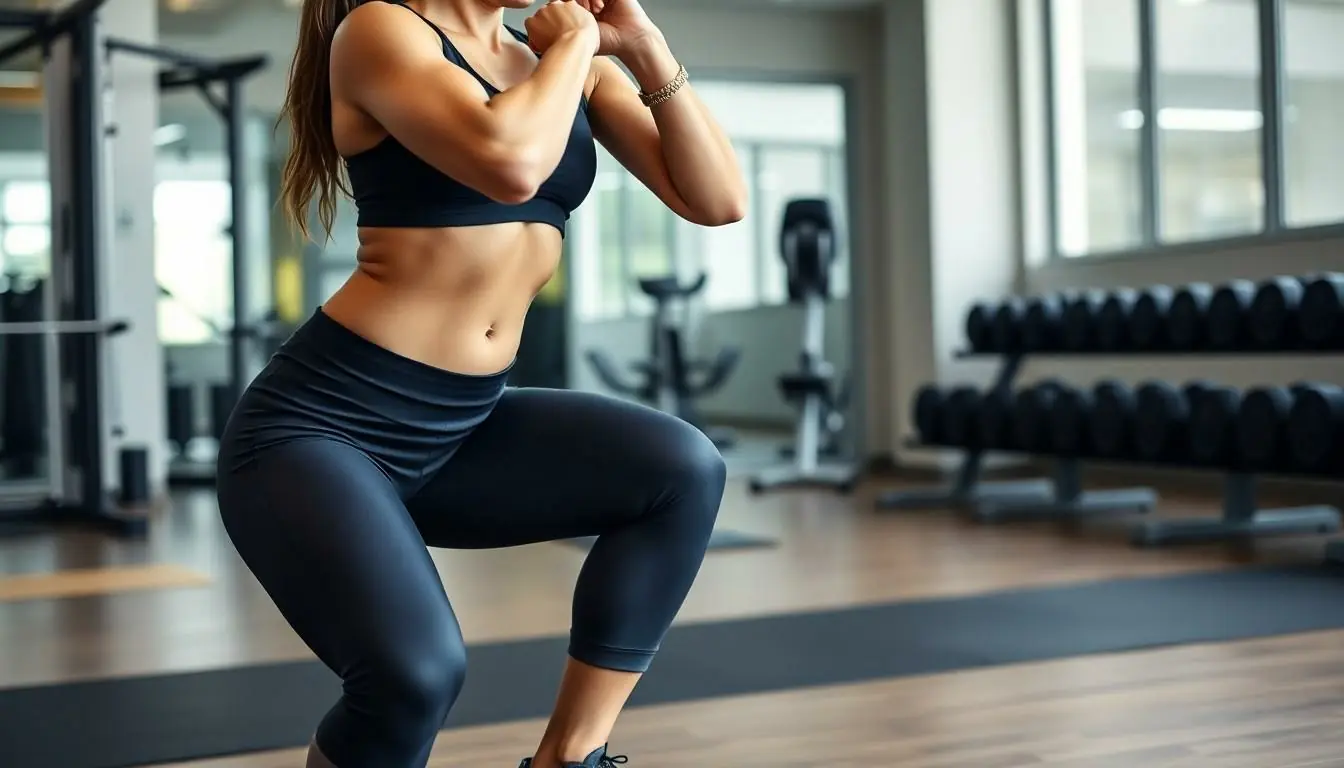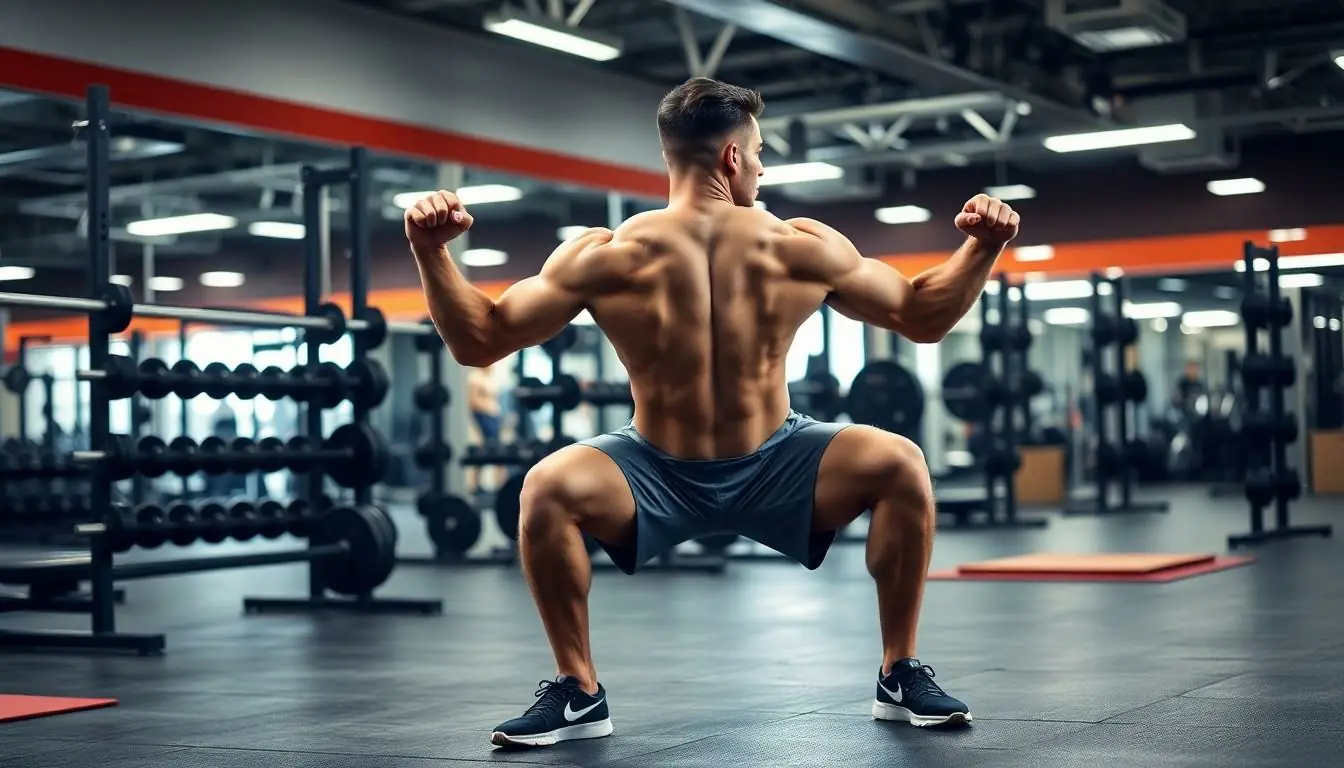Table of Contents
ToggleWhen it comes to workouts, legs and back often get overshadowed by the glitz and glam of biceps and abs. But let’s face it, who doesn’t want a strong back to carry all those grocery bags and legs that can conquer any flight of stairs? A solid legs and back workout isn’t just about aesthetics; it’s about building strength and stability for everyday life.
Imagine strutting down the street with confidence, knowing your legs can sprint like a cheetah and your back can support you like a trusty old friend. Plus, who doesn’t love the feeling of walking like a superhero after a killer workout? Dive into this article to discover how to unleash your inner powerhouse and transform those often-neglected muscles into a dynamic duo that’ll have you feeling unstoppable.
Importance Of Legs And Back Workout
Leg and back workouts play a crucial role in overall fitness and functionality. They directly impact daily movements like walking, bending, and lifting. Strong legs help improve balance and stability, making it easier to perform various activities without risk of injury.
Building a strong back prevents common issues such as pain and poor posture. Functional strength derived from these workouts supports sports performance and enhances endurance. Additionally, increased muscle mass in the legs and back improves metabolic rate, aiding weight management.
Specific exercises for leg and back development, like squats and deadlifts, promote core strength. Having a solid core is essential for effective movement transfer and injury prevention. Such workouts also contribute to improved athletic performance, allowing for better efficiency and strength in sports.
Another benefit involves improved circulation and joint health. Enhanced blood flow positively affects recovery times and muscle repair. Incorporating legs and back workouts into a routine fosters overall physical capability and stamina.
Prioritizing these muscle groups creates a more balanced physique. An evenly developed body reduces the risk of injury while enhancing functional fitness. Focusing on legs and back workouts allows individuals to cultivate confidence and strength, extending beyond aesthetics to daily life improvement.
Benefits Of Legs And Back Workout

Leg and back workouts provide vital advantages that enhance overall fitness. Individuals often overlook these workouts, missing out on significant strength and stability gains.
Strengthening Core Muscles
Core muscles play a crucial role in overall movement and stability. Engaging in leg and back workouts activates these core muscles effectively. For example, squats and deadlifts require core engagement to maintain proper form. A strong core leads to improved balance, which benefits various physical activities. Enhanced core strength also aids in injury prevention during daily tasks. By focusing on legs and back, individuals contribute to building a solid foundation for overall physical fitness. This strong foundation supports better performance in sports and recreational activities.
Improving Posture
Proper posture is essential for long-term health and well-being. Leg and back workouts strengthen muscles that support the spine and pelvis, preventing the onset of poor posture. Exercises targeting these muscle groups encourage alignment and reduce strain on the back. Consistent practice of these workouts counters the negative effects of sedentary lifestyles, which often lead to slouched postures. Improved posture results in decreased pain and discomfort, allowing for greater comfort during everyday activities. Furthermore, maintaining good posture boosts confidence and enhances overall appearance, positively impacting social and professional interactions.
Key Exercises For Legs And Back Workout
Effective workouts for legs and back incorporate both compound and isolation exercises to maximize strength and stability.
Compound Movements
Compound movements engage multiple muscle groups, providing efficient workouts. Squats build strength in the legs while also activating the core and back. Deadlifts target the entire posterior chain, enhancing back strength and improving grip. Lunges not only strengthen legs but also engage stabilizing muscles needed for balance. Bent-over rows promote upper back strength and improve posture, supporting daily activities. These exercises contribute significantly to overall fitness and functional movement, making them essential for those looking to enhance their performance in daily life.
Isolation Exercises
Isolation exercises focus on specific muscle groups, allowing targeted strength development. Leg curls strengthen the hamstrings, minimizing injury risk during exercises like squats. Calf raises offer a way to enhance calf strength, contributing to better stability during activities. Lat pulldowns help develop the upper back, aiding in posture and shoulder health. Glute bridges isolate the glutes, creating stability for the lower back during various movements. Incorporating these exercises into a workout routine helps individuals achieve balanced strength while supporting overall fitness goals.
Tips For Effective Legs And Back Workout
Effective legs and back workouts rely on correct form and technique to prevent injury and maximize benefits.
Form And Technique
Proper alignment is crucial during exercises. Feet should remain shoulder-width apart during squats, with the back straight and chest lifted. Engage core muscles to support the spine throughout each movement. Maintain a controlled tempo when lifting weights, emphasizing both the concentric and eccentric phases. It’s important to avoid locking joints at the top of the movement. Ensure the knees don’t extend past the toes during squats. For deadlifts, keep the bar close to the body to maintain balance. Performing exercises with correct technique enhances effectiveness and reduces the risk of injury.
Recovery And Nutrition
Recovery plays a key role in muscle development. Adequate rest days are necessary to allow muscles to repair and strengthen. Incorporating active recovery, such as light walking or stretching, aids in circulation and reduces soreness. Nutrition directly impacts recovery. Consuming protein-rich foods within 30 minutes post-workout helps rebuild muscle. Including carbohydrates replenishes glycogen stores for energy. Hydration is essential; drinking water before, during, and after workouts supports performance and recovery. Proper sleep also significantly enhances recovery, with 7-9 hours recommended each night for optimal athletic performance.
Embracing leg and back workouts can lead to significant improvements in strength and functionality. By prioritizing these often-overlooked muscle groups, individuals can enhance their daily activities and overall fitness. The right combination of compound and isolation exercises not only builds muscle but also boosts confidence and reduces injury risk.
Incorporating proper form and technique is essential for maximizing results and preventing injury. With consistent practice and a focus on recovery, anyone can transform their fitness journey. A balanced approach to leg and back training ultimately paves the way for a healthier lifestyle and improved performance in all aspects of life.




